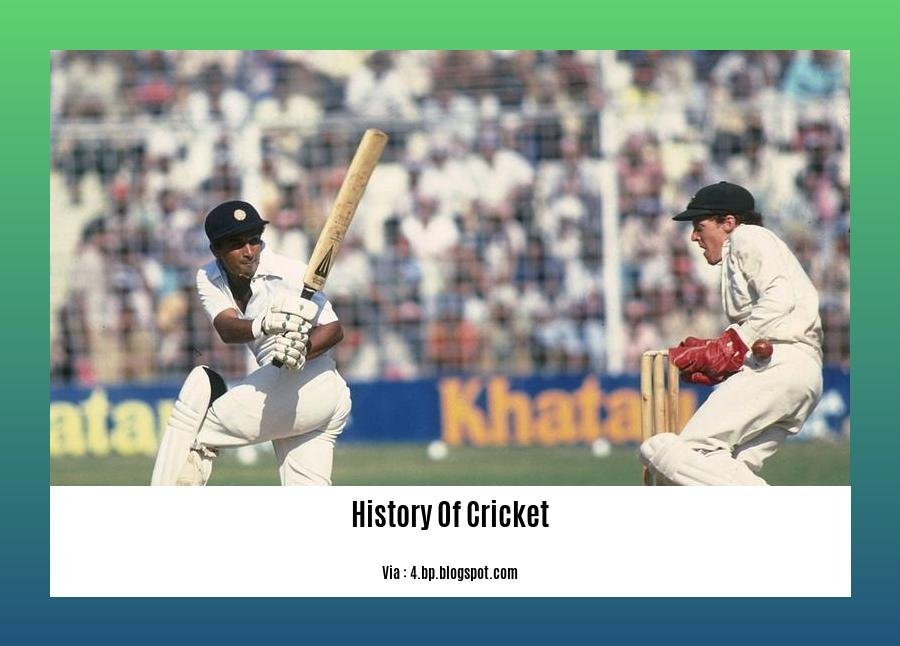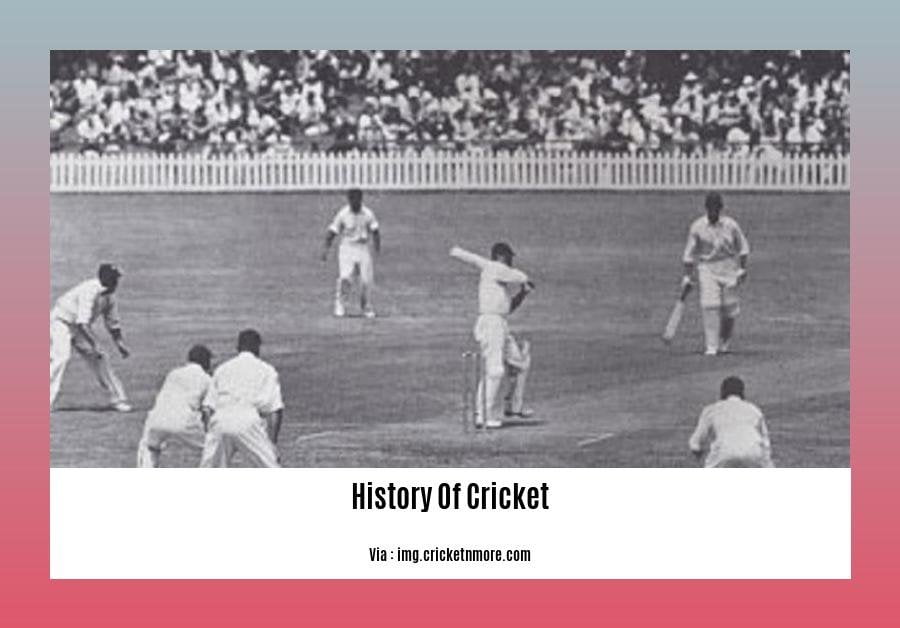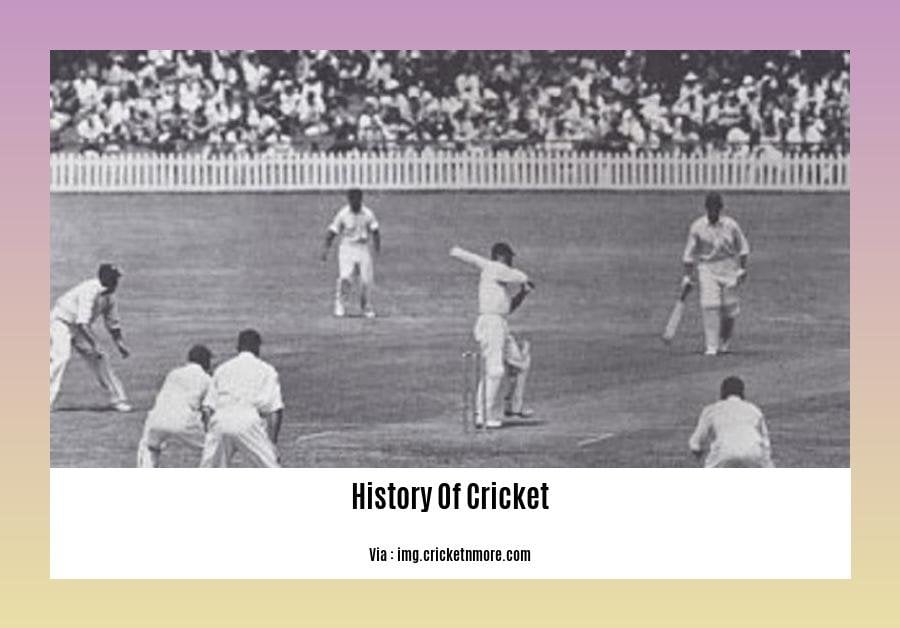Embark on an extraordinary journey through time as we unveil the rich history of cricket. From its humble origins to the modern spectacle it has become, we delve into the archives to uncover the fascinating evolution of this beloved sport. Our exploration spans the centuries, examining the early developments that shaped its rules and culture, and tracing the rise of legendary players who left an indelible mark on the game. We will also shed light on the social and cultural factors that have influenced cricket’s trajectory, and its enduring legacy as a global phenomenon. [- Unveiling the Rich History of Cricket: A Journey Through Time]
Key Takeaways:
- Cricket’s origins lie in England as a children’s game in woodlands.
- Adults started playing cricket in the 17th century.
- The Marylebone Cricket Club (MCC) established the first official cricket club in 1787.
- British colonization spread cricket to other countries, notably India.
- India gained Test cricket status in 1932.
- Over 100 countries now play cricket in various formats and competitions.
History of Cricket


Generations have enjoyed cricket, a vibrant tapestry of sporting history and a true test of skill and strategy. The history of cricket is replete with fascinating stories, from its humble beginnings to its global prominence today.
The Early Days
Cricket emerged in England during medieval times as a form of children’s entertainment. By the 17th century, adults had embraced it, codifying its rules and establishing the first official club in 1787.
Global Expansion
Cricket spread globally through British colonization, particularly to India. The subcontinent became a cricketing powerhouse, producing legendary players and hosting exciting matches. In 1932, India became a test cricket nation, igniting a fervent passion for the sport throughout the country.
The Modern Age
Today, over 100 countries play cricket. The game has evolved into diverse formats, from the traditional five-day test matches to the fast-paced Twenty20 format. The International Cricket Council (ICC) regulates the sport, organizing international tournaments and promoting its growth worldwide.
Unforgettable Moments
Throughout its history, cricket has witnessed countless memorable moments:
- Don Bradman’s record-breaking innings of 99.94
- Vivian Richards’ swashbuckling batting style
- India’s historic victory at the 1983 World Cup
- The Ashes rivalry between England and Australia
These moments have etched cricket into the hearts of fans, cementing its place as a cherished sport that continues to inspire and captivate generations.
- Uncover the fascinating Origins in England of cricket, where the game’s roots first took hold.
- Dive into the Evolution of the Ashes series, a legendary rivalry that has captivated cricket fans for over a century.
- Delve into the rich ICC World Cup history, showcasing the tournament’s iconic moments and unforgettable triumphs.
History of Cricket PDF
Key Takeaways:
- Emerged from stick-and-ball games in England around 500 years ago.
- Became a distinct game by the 17th century.
- Gained immense popularity in England during the 18th century.
- Spread globally in the 19th and 20th centuries, leading to international matches and the ICC.
- First formal Test cricket match in 1877.
Cricket, a beloved sport with a rich tapestry of history, has captivated hearts and minds across generations. Its evolution from humble beginnings to a global phenomenon is a testament to its enduring charm.
As the game of cricket evolved, so too did its rules and regulations. The first documented laws were established in the 1774, laying the foundation for the modern game. Over time, these laws have been refined and adapted to keep pace with the changing demands of the sport.
The rise of legendary players has also played a pivotal role in shaping cricket’s history. From the legendary Don Bradman, known for his unparalleled batting prowess, to the enigmatic Shane Warne, who revolutionized spin bowling, these players have left an indelible mark on the game. Their skill and artistry continue to inspire and captivate fans worldwide.
Beyond the technicalities and star power, cricket has also been shaped by social and cultural factors. In England, the sport became deeply intertwined with national identity and class structure. In other countries, such as India and Australia, cricket has become a symbol of national pride and unity.
The legacy of cricket extends far beyond the boundaries of the pitch. It has inspired literature, film, and music. It has fostered camaraderie and international understanding, bringing people together from all walks of life.
Today, cricket stands as a testament to the enduring power of sports to captivate and inspire. Its history is a rich tapestry of skill, passion, and cultural significance, waiting to be explored and cherished.
Citations:
- History of Cricket
- Cricket | Definition, Origin, History, Equipment, Rules
FAQ
Q1: When and where did the earliest forms of cricket originate?
A1: Cricket emerged in England around 500 years ago, evolving from stick-and-ball games played in the woodlands.
Q2: How did cricket gain popularity and spread beyond England?
A2: Cricket gained popularity in England during the 18th century and spread globally in the 19th and 20th centuries, especially through British colonization, leading to the establishment of international matches and the formation of the International Cricket Council (ICC).
Q3: When was the first official cricket club formed?
A3: The first official cricket club, the Marylebone Cricket Club (MCC), was formed in 1787.
Q4: Which nation, besides England, played a significant role in the development of cricket?
A4: India became a test cricket nation in 1932 and has since played a prominent role in the sport’s global growth.
Q5: How many countries currently participate in international cricket?
A5: Over 100 countries now play cricket in various formats and tournaments.
















